Sterra founders on building a home wellness brand – achieve 8-figure revenue in just 2 years
In the pursuit of a healthier, optimised life, many aspects come into play — from maintaining a balanced diet and engaging in regular exercise, to ensuring quality sleep and overall well-being. However, one often overlooked factor is the environment we create within our own homes.
Recognising this vital element of holistic health, co-founders Chris Lim and Strife Lim embarked on a mission to bring “luxurious wellness” within reach for everyone, giving birth to Sterra.
Chris and Strife’s journey with Sterra began after their paths crossed in secondary school. Shortly after graduating in 2015, the duo started an e-commerce business to sell Squatty Potty toilet stools.
The venture unfortunately didn’t work out and they shifted their focus to establishing an online store dedicated to selling T-shirts. Although the business generated substantial revenue, the slim profit margin made it unsustainable in the long run.
Both Chris and Strife were determined to not let failure get the better of them, and decided to make another entrepreneurial attempt.
As they say, the third time’s a charm. They saw an opportunity to bridge the gap between luxury and accessibility in the burgeoning wellness market, and drawing on the lessons learned from their past business failures, the idea for Sterra was conceived.
Sterra, at its heart, is more than just a consumer electronics brand; it’s a lifestyle partner. Our focus is on crafting an opulent, yet accessible, home ecosystem that promotes and supports individual wellness.
… We aren’t merely selling products, we are offering a path to peak performance. Our mission is to empower individuals to take control of their wellness journey right from their living spaces, making a luxurious and healthier lifestyle available to everyone.
– Chris Lim, co-founder of Sterra
Making luxury wellness affordable to all
Embarking on the Sterra journey was not without its hurdles, as co-founder Chris recalls.
The challenges faced during the startup phase tested their resolve and determination. Uncertainty loomed large: would people resonate with their products? Would their vision of affordable luxury wellness strike a chord with customers?
As such, they focused primarily on building products that truly appealed to consumers, which proved to be the main challenge.
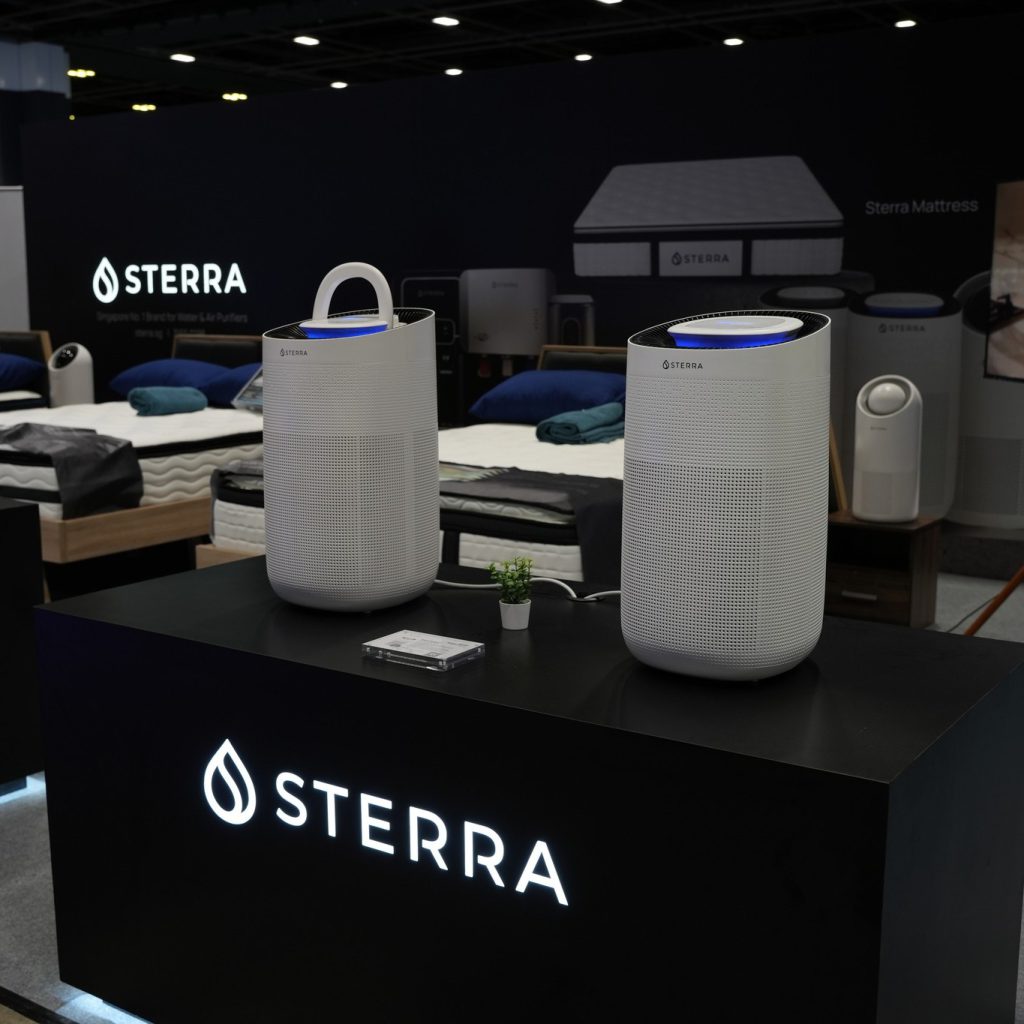
Operating without external funding amplified these challenges. Every dollar spent had to be justified, every decision carefully analysed to ensure we were investing our resources wisely.
With survival on the line in the early days, we had to be laser-focused on what mattered most: delivering high-quality, effective products with an aesthetic appeal that customers would love.
– Chris Lim, co-founder of Sterra
Fortunately, the response they received at launch validated their efforts. The demand for their products was overwhelming, exceeding their expectations. This positive reception quickly presented them with a new challenge: keeping up with inventory.
While it was undoubtedly stressful, it was also a “good problem” to have, signalling that Sterra was on the right track. However, as the company grew, Sterra continued to face more challenges.
One of the most significant challenges has been striking a balance between providing high-quality, aesthetically pleasing, and effective products while maintaining affordability. This delicate equilibrium between high quality and low price can be difficult for people to grasp, even within the team initially.
To overcome this obstacle, Sterra had to challenge traditional perceptions. They made it clear that “luxury” does not necessarily equate to “prohibitively expensive.”
The company’s approach to this is to be creative and prudent when designing and building their products. They prioritise the meticulous refinement and perfection of the essential features of each product, ensuring they meet the highest standards of performance and quality.
Additionally, they steer clear of “unnecessary embellishments” that could increase costs without adding value to the user experience.
Efficiency is also a crucial aspect that Sterra has emphasised in their business operations. They carefully scrutinise every step of the process, from material sourcing to production, marketing, and customer service, in order to avoid unnecessary expenses and uphold their commitment to affordability.
Additionally, the COVID-19 pandemic presented both challenges and opportunities for Sterra.
On one hand, lockdown-induced disruptions in the supply chain posed a significant obstacle. On the other hand, the increased amount of time people spent at home resulted in a surge in demand for their products.
Ultimately, the co-founders firmly believe that challenges always bring opportunities.
“We just have to keep building while focusing on the big end goal of making effective wellness products affordable,” said Chris.
Creating a comprehensive home wellness ecosystem
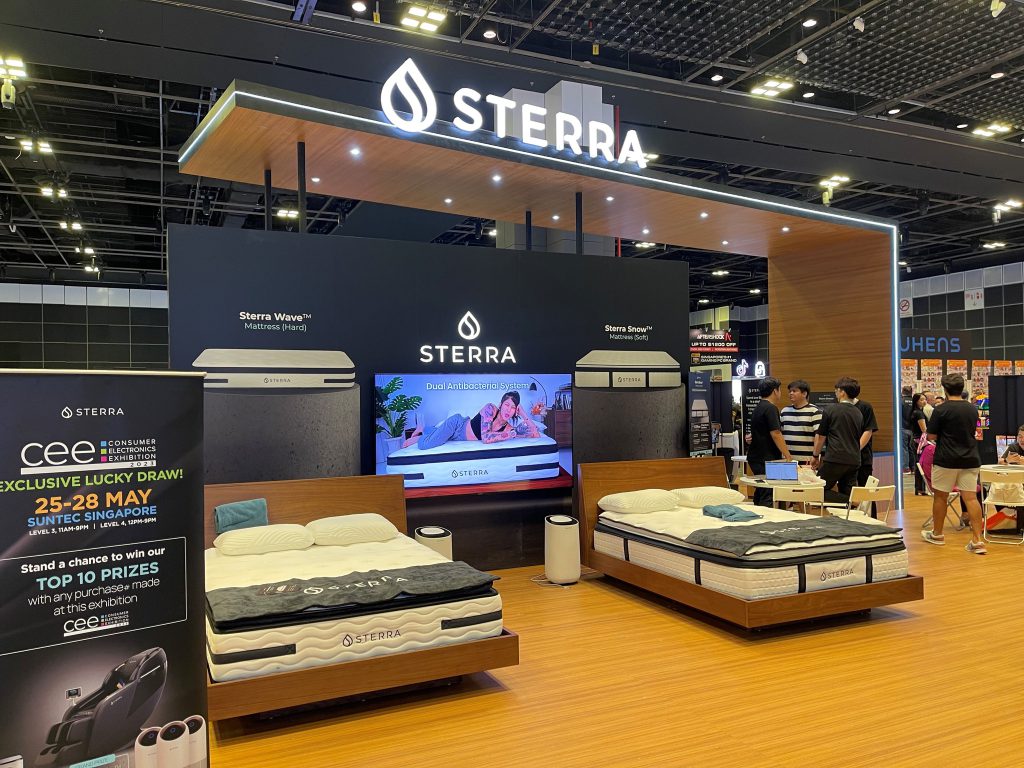
Known best for its water and air purifiers, Sterra has since diversified its portfolio to include massage chairs, wellness mattresses, and dehumidifiers.
At Sterra, our guiding mission is to create a comprehensive home wellness ecosystem that is both luxurious and affordable. Expanding our product portfolio to include diverse wellness essentials such as massage chairs, mattresses and dehumidifiers, was a logical and natural extension of that mission.
Our goal is to address every facet of home wellness, offering our customers a complete suite of products that cater to their holistic wellbeing.
– Chris Lim, co-founder of Sterra
However, maintaining consistency and quality across such a diverse range of products can be a challenging task.
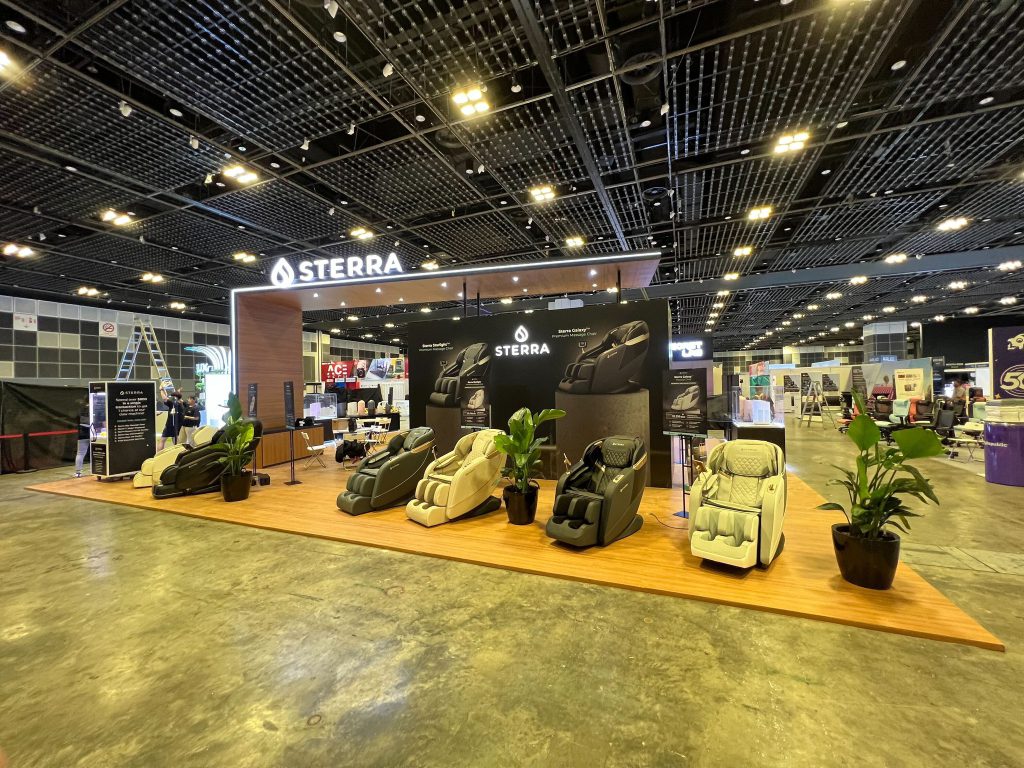
Chris acknowledged this and broke down Sterra’s meticulous and methodical approach — each product undergoes an extensive research and development (R&D) process, where the company delves into understanding user needs, market offerings, and how they can bring added value.
“When we consider a new product, we’re looking at four primary factors: market demand, effectiveness, aesthetics, and alignment with our overall wellness vision,” he added.
The R&D process at Sterra begins by analysing market trends and consumer feedback to identify gaps and demand in the wellness sector. This crucial step helps them determine the current needs and how their potential product can meet or exceed those expectations.
Effectiveness is another key factor considered during the development phase. Sterra ensures that any new addition to their portfolio brings tangible and measurable benefits to users. Their team of engineers, designers, and wellness experts collaboratively explore various designs, technologies, and materials to create products that not only promise, but also deliver results.
In addition to functionality, Sterra places a strong emphasis on aesthetics. They believe that wellness products can be both functional and beautiful, so they strive to design products that customers will be proud to display in their homes. This focus on aesthetics ensures that Sterra’s products seamlessly blend with existing home decor, enhancing the overall ambiance of the living space.
Chris also highlighted the importance of alignment with Sterra’s broader vision of promoting holistic wellness. Each new product must fit seamlessly into the existing portfolio and contribute to the company’s mission of making luxurious wellness homes affordable.
The journey from ideation to the final product can vary in duration based on the complexity of the item. On average, it takes Sterra approximately 12 to 18 months to transform an idea into a finished product ready for market.
This timeline includes initial research, design and development, rigorous testing phases, and necessary adjustments to ensure the product meets Sterra’s high standards. Although the process might be time-consuming, Chris believes that the thoroughness and attention to detail have been instrumental in Sterra’s success.
They broke even in the first year
Sterra has achieved remarkable success and significant milestones in a relatively short span of time.
From starting as a small team of four individuals, the company has grown exponentially, now employing 150 people who share a common vision.
Financially, Sterra’s growth has been impressive as well despite zero external funding. It managed to break even in its first year of operation, exceeding initial projections. This early success was a testament to the strength of their business model and the market’s enthusiastic response to their products.
We went from zero to mid-seven figures in revenue in our first year. We continued this upward trajectory, breaking into eight figures by the end of our second year, all while remaining entirely self-funded and profitable.
– Chris Lim, co-founder of Sterra
Chris attributed this achievement to their customer-centric strategy and unwavering focus on quality, design and affordability, which laid the foundation for Sterra’s rapid ascent.
Chris emphasised that Sterra places great importance on maintaining a close dialogue with customers, actively seeking their feedback and incorporating it into their product development and improvement processes.
He also highlighted Sterra’s “culture of prioritisation and innovation” as a crucial driver of success. By intensely focusing on what is most important and impactful at each stage of their journey, Sterra ensures they address critical issues and seize promising opportunities.
Furthermore, a culture of creativity pervades every aspect of Sterra’s operations. This mindset encourages out-of-the-box thinking, innovative problem-solving, and staying ahead of emerging wellness trends. It is this culture of creativity that allows Sterra to consistently deliver products that customers love.
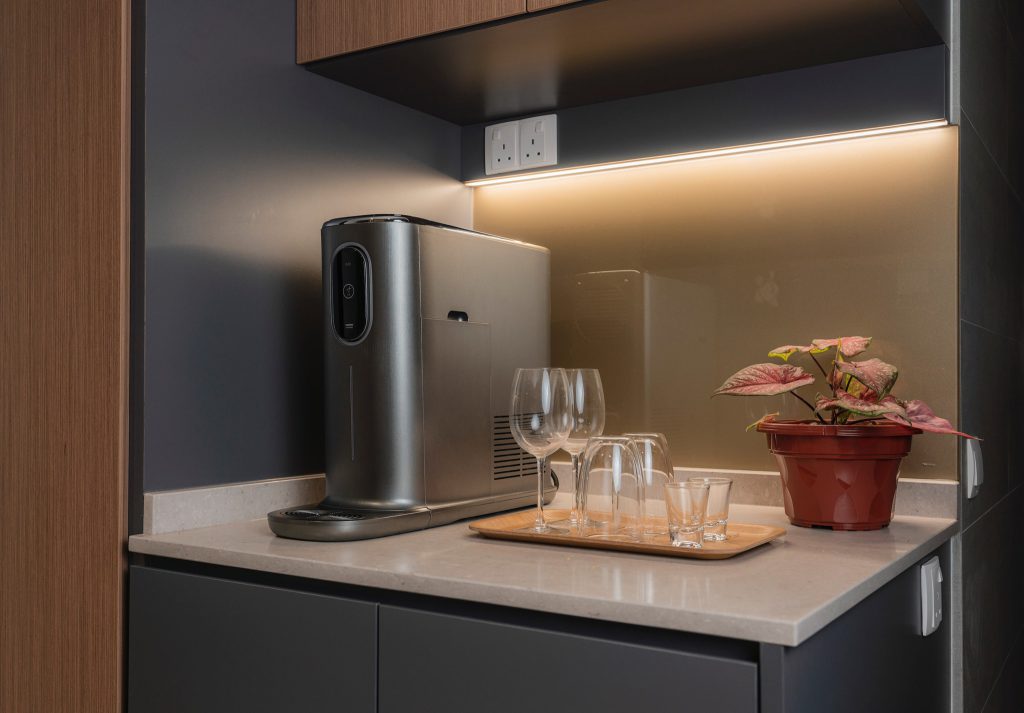
This also explains why each product in Sterra’s portfolio has become a best-seller in its respective category. Notably, their air purifiers and water purifiers have garnered rave reviews and robust sales.
Plans to enter Malaysia next
When asked about upcoming projects and innovations, Chris expressed Sterra’s plans to expand their product lines and enter new markets.
Particularly, Sterra is looking to enter the Malaysian market as its next step.
Before expanding into any market, Chris shared that they carefully assess factors such as market demand, competition, and cultural fit. He added that their decision to enter Malaysia was driven by the market’s potential and the growing awareness of wellness among its population.
Ultimately, Sterra’s moves need to be aligned with their mission, which is to make luxurious wellness home living affordable to everyone across the globe.
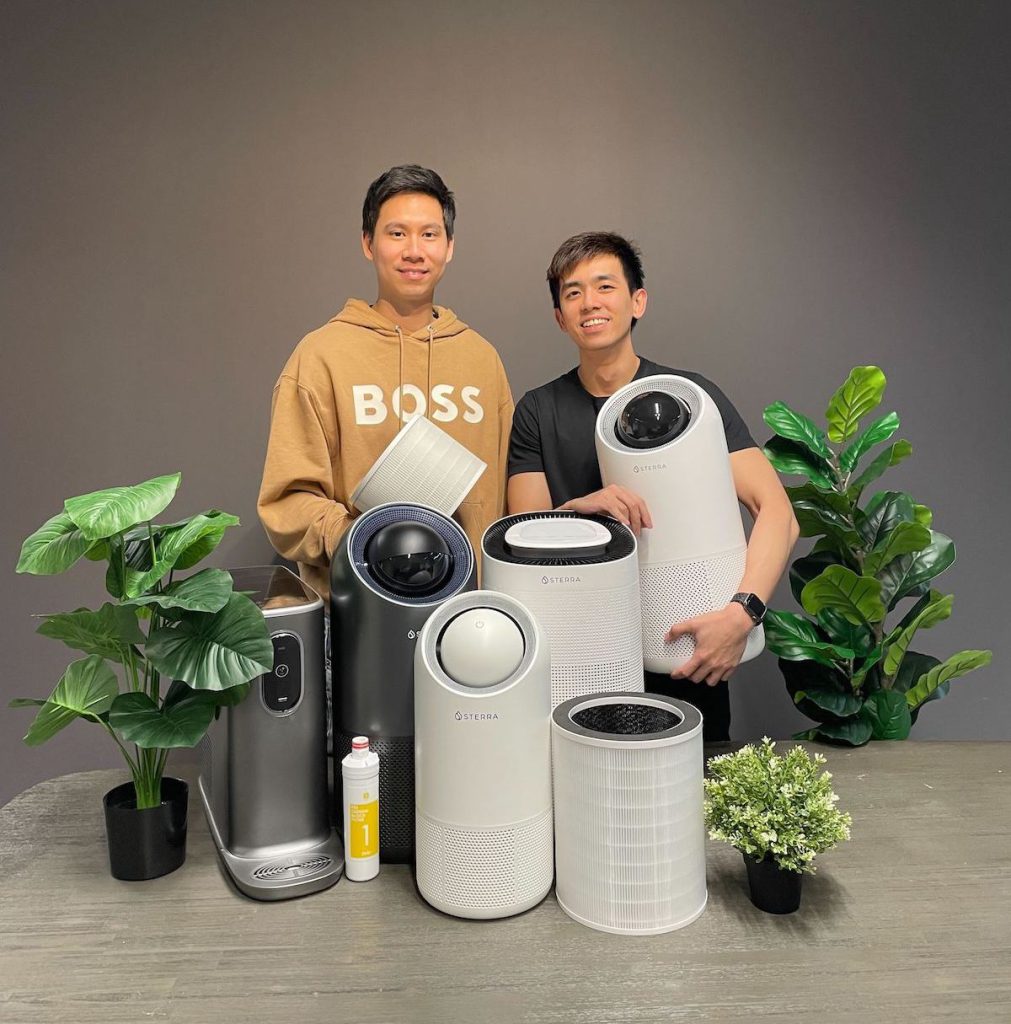
Drawing from his experience as an entrepreneur thus far, Chris offered valuable advice to aspiring entrepreneurs who may have faced failures in their previous ventures and are hesitant to start again.
Don’t view failure as an endpoint, but as a stepping stone towards success. Each failure imparts valuable lessons, lessons that success rarely provides. These experiences, although painful, equip you with unique insights and resilience that can serve as the bedrock for your future endeavours.
It’s perfect acceptable to start small again, but do so with a sharpened vision and a more nuanced understanding of your market. Remember, there’s no ‘one-size-fits-all’ in entrepreneurship. Each journey is unique, [and] each challenge, each setback is there to teach you something specific.
– Chris Lim, co-founder of Sterra
In his perspective, failures have “impeccable timing”. They arrive precisely when they are needed the most, offering the exact lessons required at each stage of the entrepreneurial journey.
Rather than shying away from failures, he urged entrepreneurs to embrace them, using the lessons learned as fuel towards their next milestone.
Summing up the interview, Chris emphasised that the path to success is often paved with instances of failure, and it is those who learn and persevere that eventually reach the finish line.
Featured Image Credit: Sterra
For all the latest Life Style News Click Here
For the latest news and updates, follow us on Google News.
